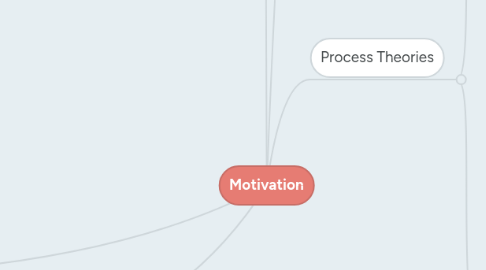
1. Theory X & Theory Y
1.1. Theroy X: Dislike work
1.2. Theory Y: Like Work
2. Motivator - Hygiene Theory - Frederick Herzberg
2.1. Hygiene Factors
2.1.1. Dissatisfaction
2.1.2. No Dissatisfaction
2.1.3. Content Theories
2.1.3.1. Needs-based theories of Motivation
2.1.3.1.1. ERG Theory - Clayton Alderfer
2.1.3.1.2. Needs Hierarchy Theory - Abraham Maslow
2.1.3.1.3. Four Drive Theory - Innate Human Drives
2.1.3.1.4. Learned Needs Theory - McClelland
2.1.4. Challenges of Motivating Employees
2.1.4.1. Changing workforce
2.1.4.2. Revised employment relationship
2.1.4.3. Flatter Organisations
2.2. Motivators
2.2.1. Satisfaction
2.2.2. No Satisfaction
3. Employee Engagement
4. Motivation Process
5. Process Theories
5.1. Expectancy Theory of Motivation
5.1.1. Expectancy Theory Model
5.1.1.1. Effort
5.1.1.1.1. Performance
5.1.2. Goal Setting and feedback
5.1.2.1. Characteristics of Effective Goals
5.1.2.1.1. Relevant
5.1.2.1.2. Commitment
5.1.2.1.3. Feedback
5.1.2.1.4. Participation
5.1.2.1.5. Challenging
5.1.2.1.6. Specific
5.1.2.2. Characteristics of effective feedback
5.1.2.2.1. Specific
5.1.2.2.2. Timely
5.1.2.2.3. Relevant
5.1.2.2.4. Credible
5.1.2.2.5. Sufficiently frequent
5.1.2.2.6. Credible
5.1.2.3. Multisource (360-degree) Feedback
5.1.2.4. Limitations
5.1.2.4.1. employees tend to select easy goals
5.1.2.4.2. can't apply goal setting to every job
5.2. Organisational Justice
5.2.1. Equity Theory
5.2.1.1. Overreward Inequity
5.2.1.1.1. Outcomes/Inputs > Outcomes/Inputs
5.2.1.2. Underreward Inequity
5.2.1.2.1. Outcomes/Inputs < Outcomes/Inputs
5.2.1.3. Equity
5.2.1.3.1. Outcomes/Inputs = Outcomes/Inputs
5.2.1.4. Correcting Inequity Feelings
5.2.1.4.1. Underpaid
5.2.1.4.2. Overrewarded
5.2.1.5. Equity sensitivity
5.2.1.5.1. Equity Sensitives
5.2.1.5.2. Benevolents
5.2.1.5.3. Entitleds
5.2.2. Procedural Justice
5.2.3. Distributive Justice
5.2.4. Equity Principle
5.2.5. Structural Rules
5.2.6. Social Rules

